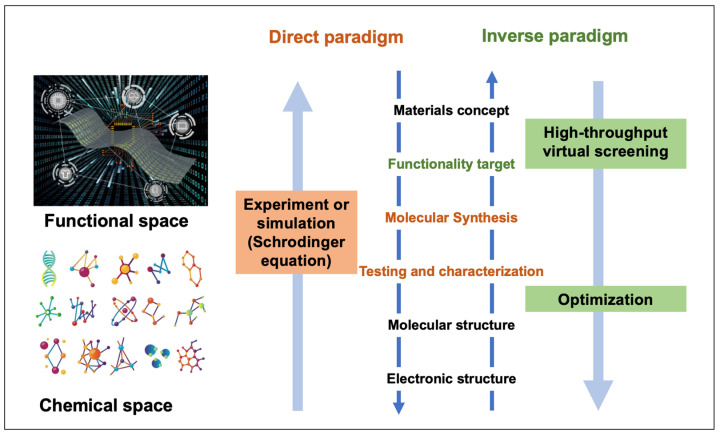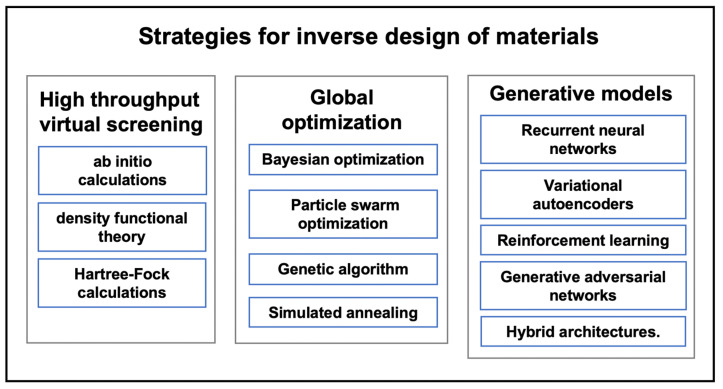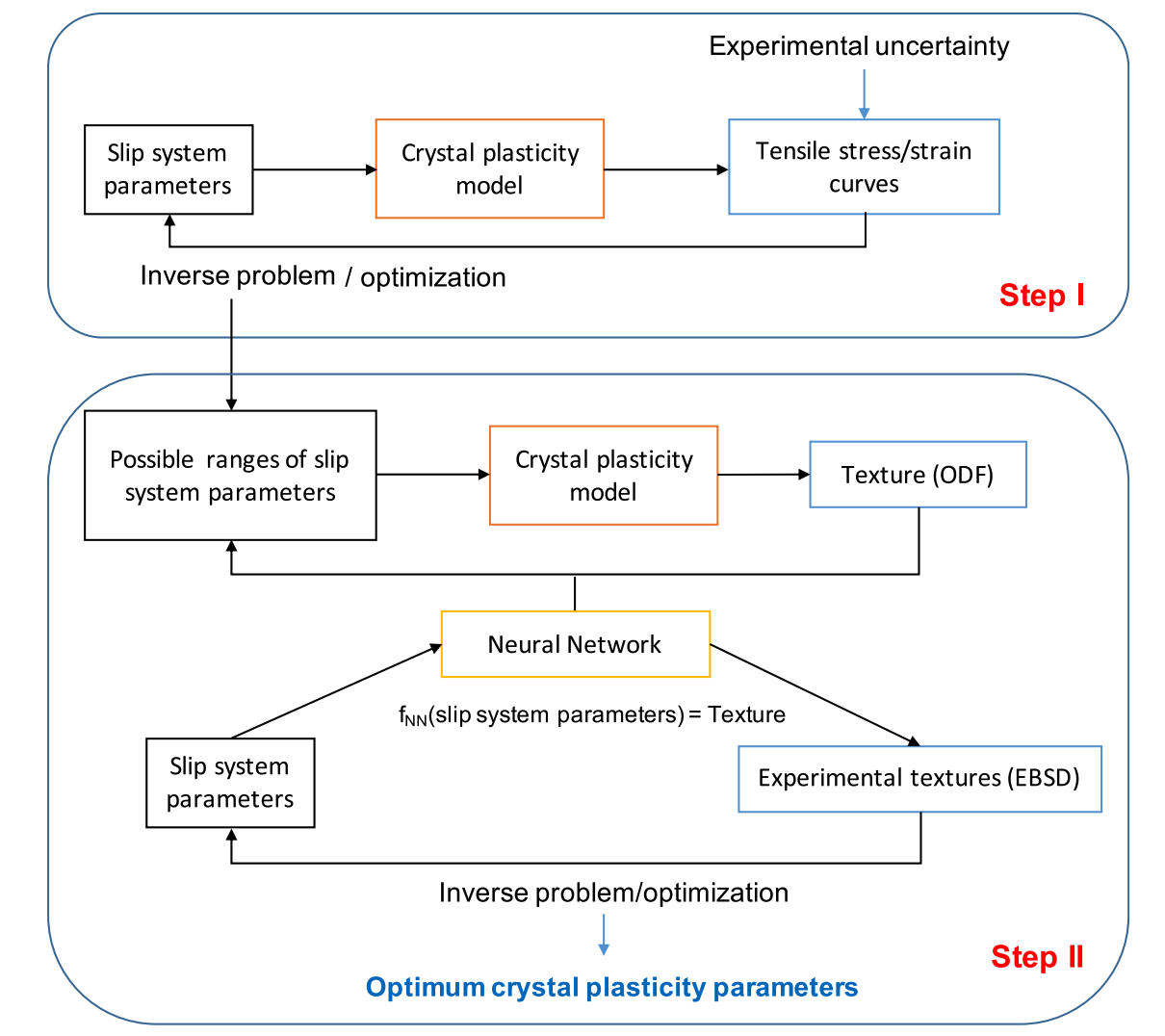The inverse problem-solving process begins with determining the necessary material properties, such as strength, toughness, corrosion resistance, and weight. These are sometimes known as "objective" or "target" features. After determining the needed attributes, the inverse design technique may be utilized to find the micro-structural and processing factors that will result in them.
In recent years, machine learning has emerged as a powerful tool in the field of materials science. Alongside the field of materials science and engineering that is constantly evolving, with new advancements being made in the development of advanced materials that can improve the performance of aerospace products. Inverse design is a method where the desired properties of a material are specified, and the algorithms search the design space to find the micro-structural and processing parameters that will lead to those desired properties. The use of inverse design with the help of machine learning has the potential to revolutionize the field of materials science and engineering by creating new materials with improved properties and performance [1]. In the aerospace industry, the use of inverse design can lead to the development of new materials that are lighter, stronger, and more durable, which can greatly improve the performance and safety of aerospace structures. In this essay, we will delve into the concept of inverse design, the ways it can be applied to design better materials and how the aerospace industry can benefit from it. We will discuss the process of inverse problem solving, the ways machine learning is being used to optimize material research, and the benefits that the aerospace industry can gain from these advancements in material science and engineering.
The inverse problem-solving process begins with determining the necessary material properties, such as strength, toughness, corrosion resistance, and weight. These are sometimes known as "objective" or "target" features. After determining the needed attributes, the inverse design technique may be utilized to find the micro-structural and processing factors that will result in them.

Figure 1 Schematic of the different approaches toward molecular design [2]
The program explores the design space, which is a collection of all conceivable microstructural and processing parameters, for the best combination of parameters that will result in the required qualities. This is made possible thanks to an optimization technique, such as gradient-based optimization [4]. The optimization method will map over the design space, assessing alternative parameter combinations, until it finds the optimum parameter combination that results in the material's required properties.

Figure 2 Strategies for inverse design of materials [2]
The method requires access to a dataset of materials and their attributes in order to discover the optimal combination of microstructural and processing parameters. This dataset is used to train the algorithm, allowing it to understand the correlations between microstructural and processing parameters, as well as material attributes. Once trained, the system may utilize this information to forecast the characteristics of new materials depending on microstructure and processing factors.
The aerospace industry can greatly benefit from the advancements in material design and modeling made possible by inverse problem techniques and machine learning. One of the main benefits is the ability to create more accurate and reliable models of materials [5]. In the aerospace industry, accurate predictions and simulations are crucial for ensuring the safety and performance of aircraft and spacecraft. By using inverse problem techniques and machine learning, it is possible to create more accurate and reliable models of materials, which can lead to more efficient and safer designs.
For instance, Acar describes a two-step computational approach to building a robust modeling environment for this alloy [3]. The goal of this approach is to create a crystal plasticity model for Ti-7Al that is validated for both global (component-scale) and local (grain-level) features by considering experimental uncertainty.

Figure 3 Two-step solution to achieve a high-fidelity crystal plasticity model for Ti-7Al [2]
The first step in this approach is to find out the lower and upper bounds of the crystal plasticity parameters using an inverse problem. This inverse problem is solved to match the computations with the experimental stress-strain data. Which involves finding the values of the parameters that fit best the experimental data. This step is crucial as it allows us to take into consideration the uncertainty of the experiments in the model.
In the second step, the local features of the model are then validated by performing an optimization process that minimizes the difference between the simulated and experimental microstructural textures. The optimization is performed using an Artificial Neural Network (ANN)-based surrogate model that is trained within the lower and upper limits of the parameters obtained in the first step. This step helps to ensure that the model is accurate at a local level, which is important for the aerospace industry. The optimization problem is solved using an iterative process. The model starts with an initial set of parameters and the ANN predict the microstructural textures based on these parameters. Then the difference between the simulated and experimental microstructural textures is calculated. The parameters are then updated and the process is repeated until the difference between the simulated and experimental microstructural textures is minimized.
The technologies utilized to create the Ti-7Al alloy will help aerospace structures in a variety of ways. One of the primary advantages is the ability to construct more precise and trustworthy material models. Accurate forecasts and simulations are critical in the aerospace industry for assuring the safety and performance of airplanes and spacecraft. It is feasible to generate more accurate and trustworthy material models utilizing inverse problem approaches and machine learning, which can lead to more efficient and safer designs for aeronautical structures. Moreover, these techniques can lead to the optimization of multiple properties simultaneously. In the aerospace industry, materials are often required to perform multiple functions, such as providing structural support and protecting against the harsh environment of space. By using inverse problem techniques and machine learning, it is possible to optimize multiple properties simultaneously, which can lead to the development of more versatile and efficient materials for aerospace structures.
Moreover, these techniques can lead to more cost-effective materials and manufacturing processes. By using machine learning and inverse problem techniques, it is possible to create materials that are easily producible and manufacturing processes that are more efficient. This can lead to cost savings in the aerospace industry, which can be critical for the success of the final product.
Finally, these processes may result in the development of novel materials capable of withstanding the harsh environment of space. It is conceivable to build materials that can endure severe temperatures, radiation, and other harsh conditions found in space by employing machine learning and inverse design approaches. It can be beneficial for aerospace structures and the aerospace industry as a whole, since it can lead to the construction of more durable and efficient spacecraft and satellites.
In conclusion, inverse problem approaches, and machine learning has made significant progress in revolutionizing simulation technologies and materials prediction. This is especially important in the aerospace sector, where materials must fulfill many roles under harsh circumstances. The construction of the Ti-7Al alloy employing a two-step computational method combining inverse problem and machine learning approaches exemplifies the possible benefits that may be realized. The technique allows for the consideration of experimental uncertainty, the optimization of many attributes at the same time, and the development of more cost-effective materials and production processes. Furthermore, these procedures have the potential to lead to the creation of novel materials that can endure the harsh environment of space.
References:
[1] Acar, P., "Machine learning and the 'inverse problem' take center stage with design, manufacturing, testing and analysis," Aerospace America Available: https://aerospaceamerica.aiaa.org/year-in-review/machine-learning-and-the-inverse-problem- take-center-stage-with-design-manufacturing-testing-and-analysis/.
[2] Wang, J., Wang, Y., and Chen, Y., "Inverse design of materials by machine learning," Materials, vol. 15, Mar. 2022, p. 1811.
[3] Acar, P., "Machine learning reinforced crystal plasticity modeling under experimental uncertainty," AIAA Journal, vol. 58, Sep. 2020, pp. 3569--3576.
[4] Mosavi, A., Rabczuk, T., and Varkonyi-Koczy, A. R., "Reviewing the novel Machine Learning Tools for Materials Design," Advances in Intelligent Systems and Computing, Oct. 2017, pp. 50--58.
[5] Liu, X., Xu, P., Zhao, J., Lu, W., Li, M., and Wang, G., "Material machine learning for alloys: Applications, challenges and perspectives," Journal of Alloys and Compounds, vol. 921, Dec. 2022, p. 165984.